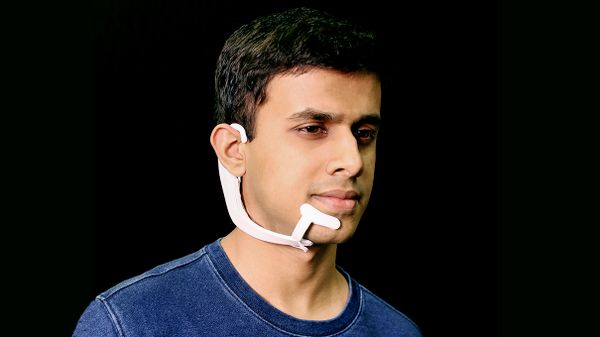
Have you ever thought about how you think?
你告诉自己:“别忘了牛奶”;re you leave home and then when you get home without it at the end of the day, you say to yourself, "How could I've been so stupid?" Is there a constant "talking to self" throughout the day?
Advertisement
A lot of people use language-based chatter to organize and focus their thoughts. However, it turns out that some people don't have this kind of inner monologue at all. Instead, they may rely more onvisualization(实例化”看到自己" buying the milk at the store). Others employ a combination of these techniques.
People on both sides of this "inner monologue" divide have a hard time imagining another way of being – to the point that it sort offreaked everyone outduring an online debate that went viral in February.
Russell Hurlburtis a psychology professor at the University of Nevada, Las Vegas. For decades, he's been doing experiments on people's inner experiences, their thoughts, feelings and sensations. Regarding the viral kerfuffle over the inner speech haves and have nots, he chuckles a bit and says he frequently hears people claim that they have an ever-present inner monologue – but his experiments show that this is not always true.
But rather than argue with them, he says, "Well, let's find out."
His tests began long ago. As a graduate student in the early '70s, he began wondering how scientists could investigate subjects'pristine inner experiences, experiences that are in your present consciousness, before your brain has tried to make sense of them or assigned them some sort of interpretation.
"The object of my research is not to explore inner speech or inner monologue or whatever you want to call it, but to explore your experience as it actually is," says Hurlburt.
He thought beepers of some kind might work, but back then, there were no cell phones or pagers. So, Hurlburt, who has an engineering background, designed and patented a device that beeped at irregular intervals. Each time the beeper went off, he asked subjects to make notes about their experiences in that moment.
As students went about their days, the beepers would go off at random times. They were instructed to try and clarify what was happening in their minds at that instant.
The beepers went off only a few times. This was intentional, so that the research subjects would forget that they had them (and thus, not contaminate their thinking processes with thoughts about the experiment).
Later, researchers asked the students questions to better understand how the students were thinking when the beepers sounded. Were they visualizing something? Experiencing a tactile sensation? Feeling an emotion? This line of inquiry is called Descriptive Experience Sampling (DES).
He says one key takeaway was that, "You can't expect a good answer on the first day." Essentially, it takes a day or two of DES training before people to find ways to focus on and express what they're experiencing in a given moment.
In his research, he found that most subjects struggled to articulate the way they were talking to themselves. When he asked them for the specific words or sentences,many came up blank.
"And in the course of doing that, you and I together I guess you would say, we decide, 'well, I thought I had inner speech, but I really don't.'"
His study showedthat subjects talked to themselves inwardly about 26 percent of the time they were sampled but many never experienced inner speech while others had it 75 percent of the time (the median percentage was 20 percent.)
Hurlburt has worked with other researchers, like Charles Fernyhough, to use DES questioning while subjects were inside MRI scanners. In a 2018 study of just five subjects, the scanner showed that the area of the brain associated withcertain topics lit upwhen subjects said they were thinking about those things, providing a physical link to the abstractions of thoughts themselves.
Still, scientists are grappling with a lot of uncertainty.
Advertisement





